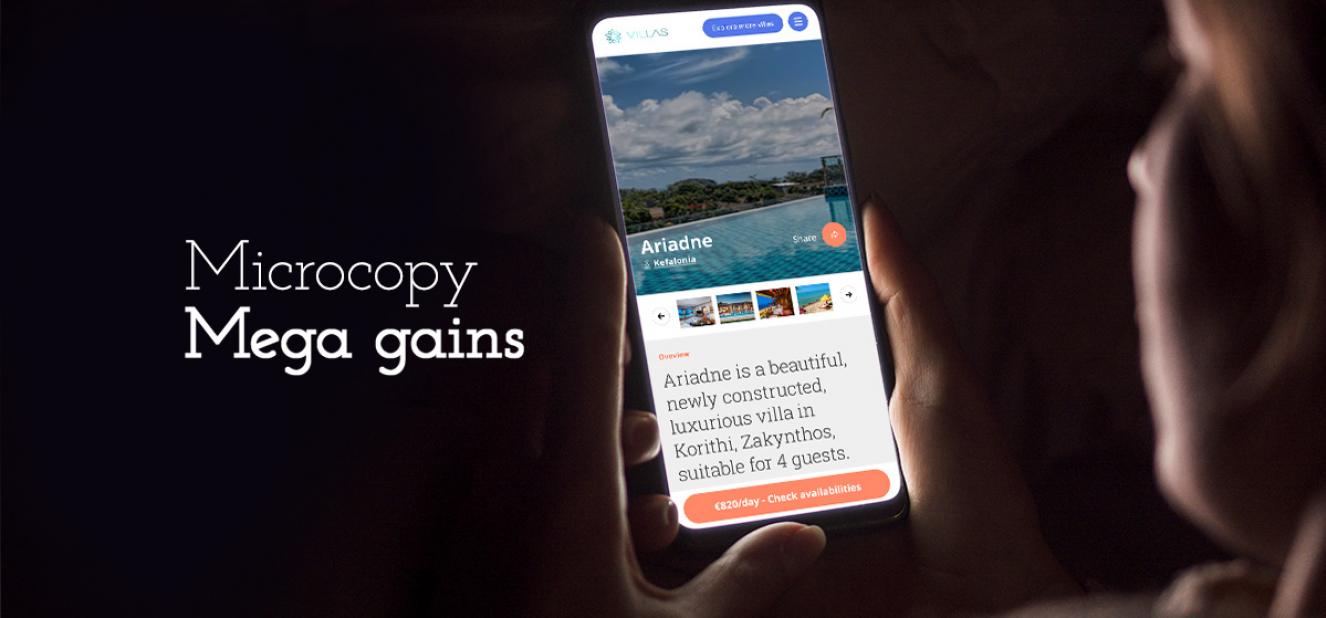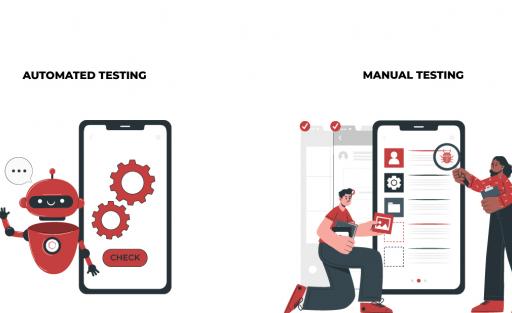Microcopy - Mega gains

See what we did there? A fine example of copywriting. Not UX writing though. Why?
Because, when it comes to copywriting, a fantastic title including wordplay, creativity and “noise” will catch the eye and make everyone want to read the whole article or ad. Because copywriting tries to sell.
On the other hand, the more one notices the copy on a UX design the less they’ll carry on with their journey without problems. The best UX writing is the one nobody will notice. The words that will guide the user and make their life easier. Because UX writing uses a virtual dialogue, called conversational writing, in order to make their journey as simple as possible.
There are many more - equally essential - differences between copywriting and UX writing, but that is a task for another time.
For now, let’s dig deeper into the definition of microcopy and its importance. That’s what the title promised after all.
Microcopy is the little bits of text found mostly on interactive parts of websites and applications. These words are usually there to instruct the user, lend a hand in their concerns, and differentiate one product’s voice or tone from another. As with every other bit of UX writing, of course, microcopy is also there to improve conversion.
To make the long story short (which is exactly what we’re talking about here), microcopy is a small text (usually 1-4 words) that makes a huge impact on the design and, of course, the user journey. From an instructional label in a field to a perfectly clear CTA, microcopy can change the user’s perception and make their journey perfect.
What makes a microcopy good
Many a writer has offered their views about the heuristics of good microcopy. Most of them agree on the size and the quality and, as per usual, most of them use different words to describe it. I have found a simpler way for everyone to remember the rules. Good microcopy must be C.L.E.A.R.
Compact: it wouldn’t be microcopy without the micro part.
Linear: a direct approach is always better.
Easy: jargon or difficult words won’t help the user.
Active: passive voice makes microcopy indirect and less friendly.
Researched: it’s easier to approach the users using their own language (voice and tone).
Keeping it C.L.E.A.R makes the best microcopy that will help users navigate through any website or app.
The importance of microcopy
The best way to explain how powerful and impactful microcopy can be is the example of how Google managed to increase the engagement rate in their hotel search by altering its call to action.
During Google, I/O 2017, Maggie Stanphill, Google’s senior UX writer, provided a reason why it is possible to gain more value as a business by using UX Writers.
As an example, she used a major 17% increase of engagement rates that they achieved by just changing their CTA from “Book a room” to “Check availability”.
In Maggie Stanphill’s own words: “This is a great example where literally changing two words had a significant impact on the business. [...] what we found was that it was far too committal at this stage in the decision-making process. So we switched it to Check availability, and what we found was that this was meeting the user where they were in their mindset. They were still considering rooms and they wanted to understand what dates were available, and what prices were in that date range.”
There are various examples and use cases where microcopy has turned the tides. That is one of the reasons, for some years now, major brands (like Google, Facebook, IBM and many more) have entrusted UX writers with their copy and content strategy. The first way to succeed in such a role is to keep the copy, especially microcopy, clear.
Keep on UXing!




